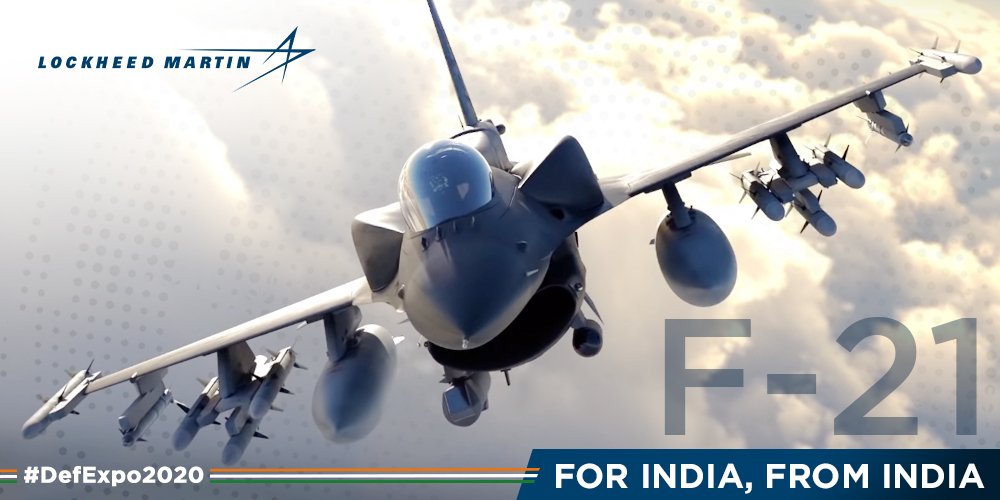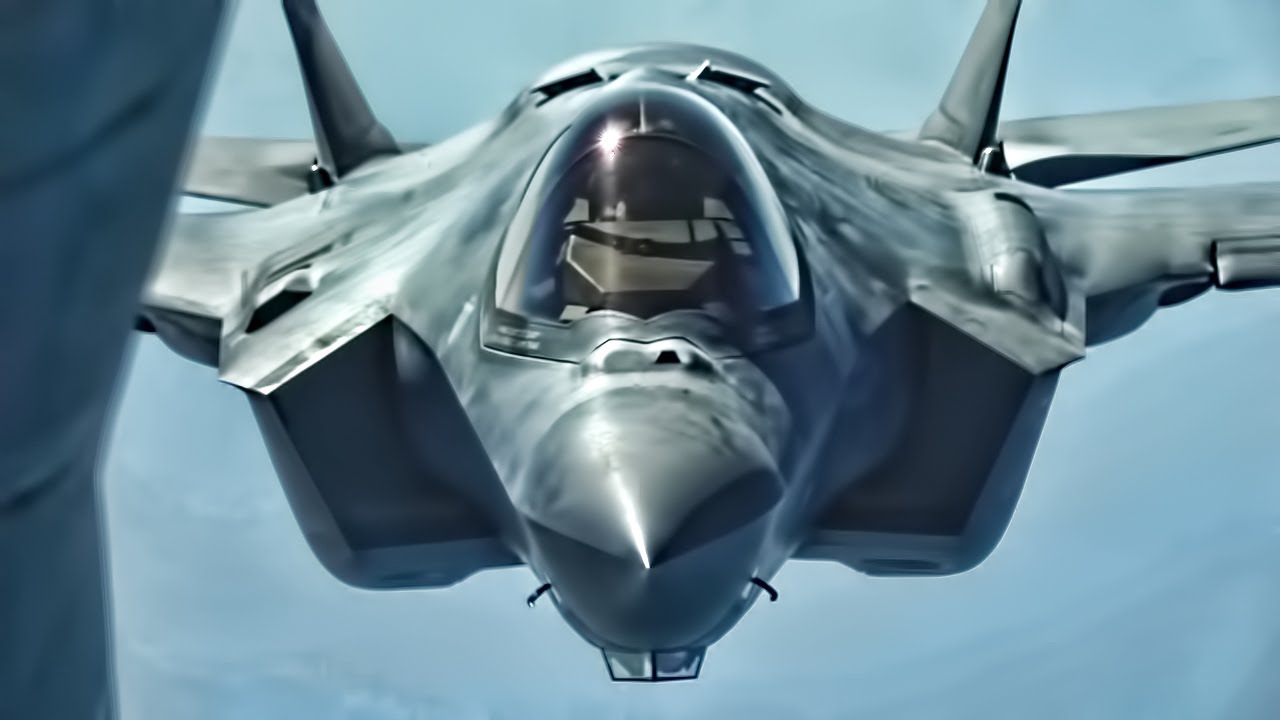The year 2024 saw the Indian Air Force (IAF) flexing its muscles with mega wargames. The possibility of the US Air Force’s F-35 fighter jet taking part in the impending multi-national drills ‘Tarang Shakti’ has once highlighted the capability gap in the IAF’s fleet, which is without a 5th-generation aircraft.
If F-35A takes part in Tarang Shakti, it will be the second time that the Lightning II will be soaring in Indian skies. The F-35A Lightning II debuted in India during the Aero-India 2023.
The US has also been canvassing to sell its best F-16 Fighting Falcon, the F-21, to India. The US has underscored the F-21 as the first step towards getting F-35 fighter jets. But the question remains: Will India take the bait?
The permutation and combination that have been used to achieve the IAF’s desired capability have also seen the Indian government give a green light to the proposal to design and manufacture India’s indigenous 5th-generation fighter aircraft, Advanced Medium Combat Aircraft (AMCA).
The Cabinet Committee on Security, headed by the Prime Minister, allocated Rupees 15,000 crore ($2B) for the design of the prototype, which is expected to be powered by indigenous jet engines with a capacity of 110 kN.
The IAF, which is down to 31 squadrons against the required strength of 42 squadrons of fighter jets, has underscored the urgent need for modern fighter platforms at every possible opportunity. It has even floated the tender to purchase 114 Medium Multi-Role Fighter Aircraft (MRFA) that are awaiting Acceptance of Necessity from the Indian Defence Ministry sitting in South Block.
The American F-21, specially configured by Lockheed Martin for the IAF, is also in the fray for the MRFA deal, along with the F-15E, Gripen-E, and Su-35. Lockheed Martin, the world’s biggest defense contractor, has partnered with India’s leading industrial house, Tata, to manufacture F-21s in India. The move is aimed at meeting the requirements of the Indian Government, which seeks to strengthen the Indian aerospace industry.
Points In Favour Of F-21 – The ‘Made-in-India’ F-16
The fact remains that it would take at least 6 to 8 years for the IAF to add the jets to its fleet after getting the government’s nod. This is the same amount of time that the Indian aerospace makers claim will take Tejas Mk-2 to get ready for induction.
Former Vice Chief of IAF Air Marshal Anil Khosla told the EurAsian Times that while the indigenous Tejas are easy to make, “there is a requirement for new-generation multi-role aircraft to maintain a balanced force (until the domestic Tejas Mk II and Advanced Medium Combat Aircraft is ready).”
“MRFA aircraft need to be procured (maybe in the next installment of defense spending). These should be procured in phases (maybe two to three squadrons at a time. This would spread the expenditure over some time, and we would get later and better technology and features,” Khosla added.
The F-21 is a variant of the F-16 Block 70, and its IAF-specific features were also unveiled at Aero-India 2023. The sales pitch included an advanced APG-83 Active Electronically Scanned Array (AESA) radar, which has detection ranges nearly double those of previous mechanically scanned array radars and the ability to track and attack more targets with higher precision.
Besides, the F-21 will have Triple Missile Launcher Adapters (TMLAs) that allow it to carry 40 percent more air-to-air weapons than previous F-16 designs.

Air Marshal Khosla adds, “The F-21 is an advanced, single-engine, multi-role fighter with the most optimal life-cycle cost for the IAF and the longest service life among all competitors: 12,000 flight hours. The F-21 is also the only fighter in the world capable of both probe/drogue (the most widely used in the world) and boom (USAF standard) aerial fuelling capability.”
The probe-and-drogue refueling equipment is simple, light, and easy to install. A hose-drogue pod can be added to any aircraft with enough payload capacity, including fighters, large transport aircraft, and UAVs. This, along with a conformal fuel tank, will “provide the IAF with greater penetration and stationary flight dwell capability,” Air Marshal Khosla opines.
The added advantage is the Joint Venture Tata Lockheed Martin Aerostructures Limited, which currently manufactures components for F-16s and would manufacture the aircraft in India should it bag the MRFA deal.
“In addition to local manufacturing of the F-21, TLMAL would significantly increase its share of the global F-16 fighter maintenance, repair, and operations (MRO) market, along with that of other Lockheed Martin products to which it would also have access,” Air Marshal Khosla adds.
Will The (F-35) Lightning Strike?
The F-35A is the US Air Force’s latest, highly advanced multi-role, supersonic, stealth fifth-generation fighter. The aircraft can perform air superiority and strike missions and is also capable of electronic warfare, intelligence, surveillance, and reconnaissance.

Not only is the US picky about countries that can acquire F-35s, but the fact remains that the F-35 doesn’t fit into India’s strategic calculus. The procurement does not conform to the Indian scheme of being self-reliant.
Also, Turkey’s purchase of the S-400 cost its membership in the F-35 development project. India also recently inducted the Russian Air Defense System. Will that be a deal breaker for the US?
India’s quest for the next generation of fighter jets began almost 15 years ago when it joined hands with Russia to develop the Fifth Generation Fighter Jet (FGFA).
The IAF withdrew from one of the most ambitious and controversial joint Indo-Russian defense programs to date: the co-development and production of the Sukhoi/HAL Fifth Generation Fighter Aircraft (FGFA) in 2018 after both sides disagreed on cost-sharing plans, technology transfers, and the aircraft’s technological capabilities, among other things.
Now, the situation is such that India’s bête-noir Pakistan could acquire a 5th-generation fighter jet before the indigenously built AMCA.
In 2009, the AMCA was initially planned as an all-weather, swing-role fighter jet capable of aerial fights, ground strikes, enemy air defense suppression, and electronic warfare. After four years, in 2013, the first feasible configuration was worked out, which was accepted by the IAF.
However, a joint venture with Russia to develop FGFA was initiated. Buoyed by the success of the BrahMos joint venture, the IAF decided to go with the project until it pulled out of it in 2018. This has led to the delay of the AMCA project, but now the IAF again decided to go with the indigenous 5th-generation fighter jet.
The DRDO claimed earlier that the prototype would take three years to fly from the date of the government’s approval. Even at the earliest, the prototype will be ready by 2027.
The IAF has accepted the critical design presented by the ADA. GE-F414 engines will power the first five AMCA prototypes. The IAF will procure 125 AMCAs in Mk1 (40 with GE F414 engines) and Mk2 (with ‘Indian’ engine) configurations. The latter is proposed to have a more powerful engine developed in collaboration with a foreign partner.
Parity With The Neighbour
India will need a lot of aircraft to maintain combat parity with the People Liberation Army-Air Force (PLAAF), which remains the IAF’s primary adversary for years to come. However, the IAF still needs to convince the incumbent Indian government that only imported aircraft in such large numbers can meet the need.
In 2023, the number of surface-to-air missile (SAMs) units in the IAF surpassed the number of fighter jet squadrons in its fleet, although not by design.
The dwindling fighter jet squadrons have been a concern for the force. A representative of the IAF had told a Parliamentary Standing Committee on Defense in 2023 that the force has 31 fighter jet squadrons against the sanctioned strength of 42.
With its acquisition process beset by delays, the representative maintained that the number of fighter jet squadrons is likely to decrease further by 2029, and by 2030, the Air Force will likely have 29-30 squadrons.
Contrary to this, public sources indicate that the IAF presently has nearly 50 units of SAMs of various ranges. The IAF has Russian-built Pechora (SA3-Goa), OSA-AK, and Igla; S-400 air defense system and Medium Range Surface to Air Missile (MRSAM) made with the help of Israel; and indigenously-built Akash surface to air missiles.
Air Marshal Khosla said that while the IAF’s capabilities have increased, its “war endurance capacity, the strength of fighter and combat support platforms” need attention. “Overall, the deterrence capability has not kept pace with the existing threat perception. This aspect needs to be addressed urgently,” he adds.
On the F-35, the US earlier admitted it was in the ‘very early stages‘ of offering stealth fighters to India. Will the US send F-35s to India for ‘Tarang Shakti’ remains to be seen, but if it does, the indications are clear that the IAF could be a potential customer for Lockheed jets.
- Ritu Sharma has been a journalist for over a decade, writing on defense, foreign affairs, and nuclear technology.
- The author can be reached at ritu.sharma (at) mail.com
- Follow EurAsian Times on Google News




